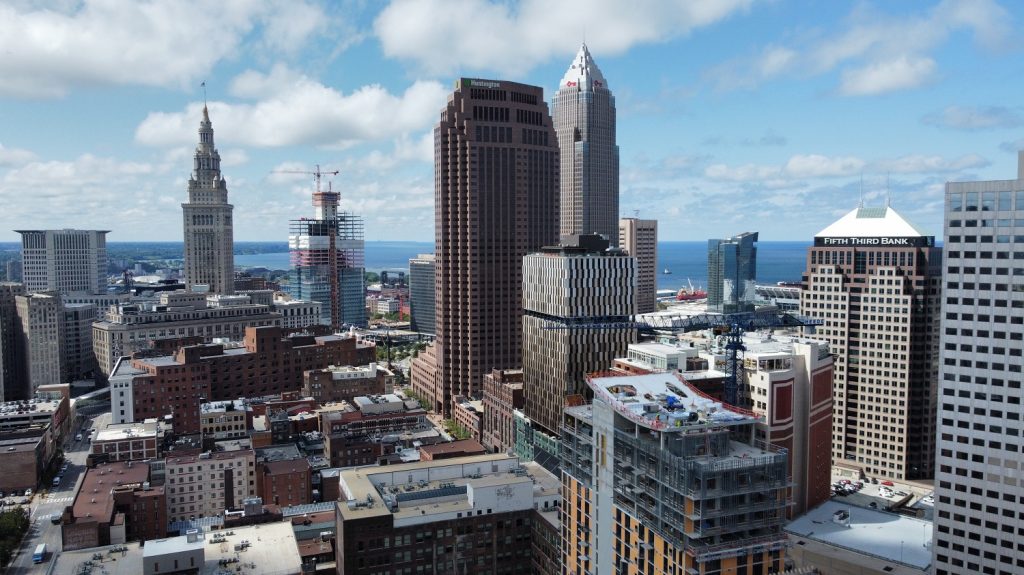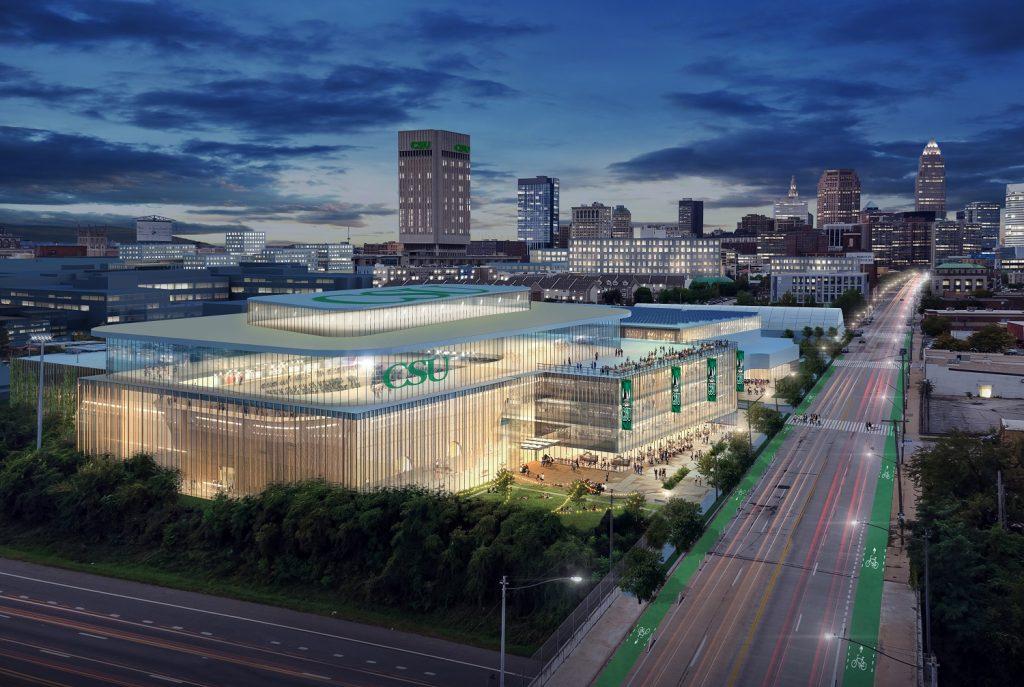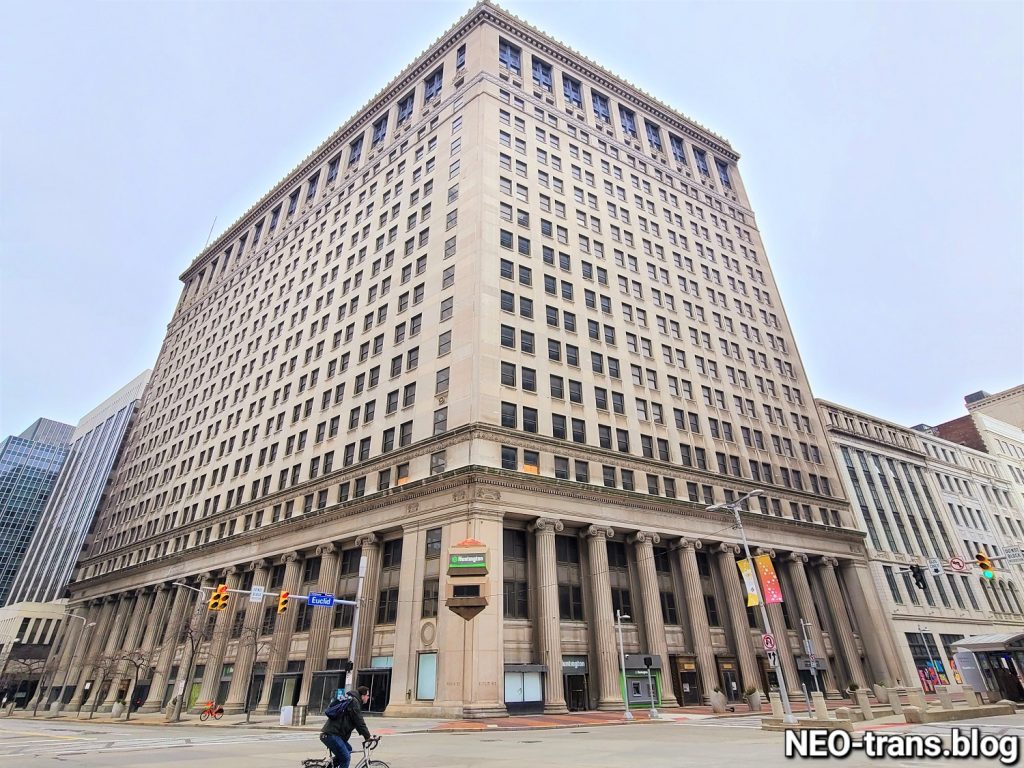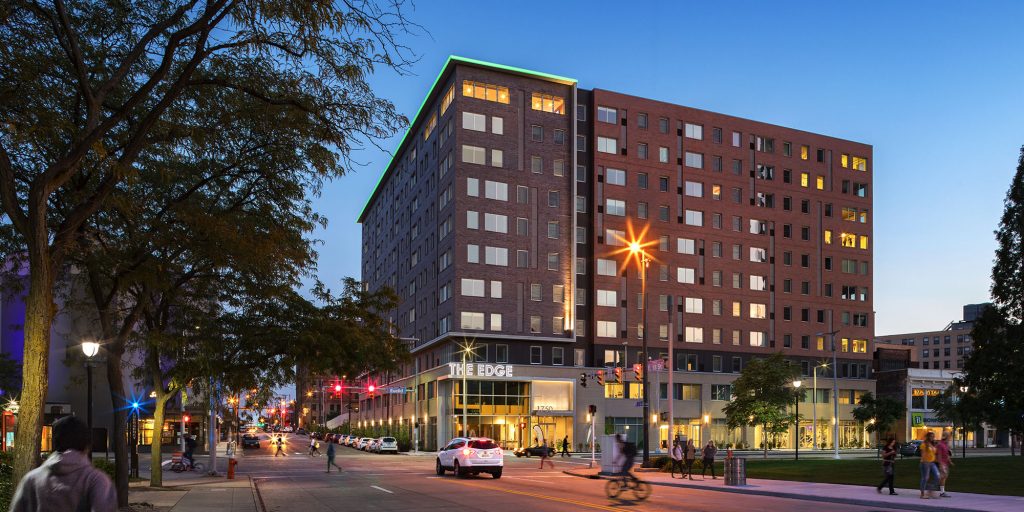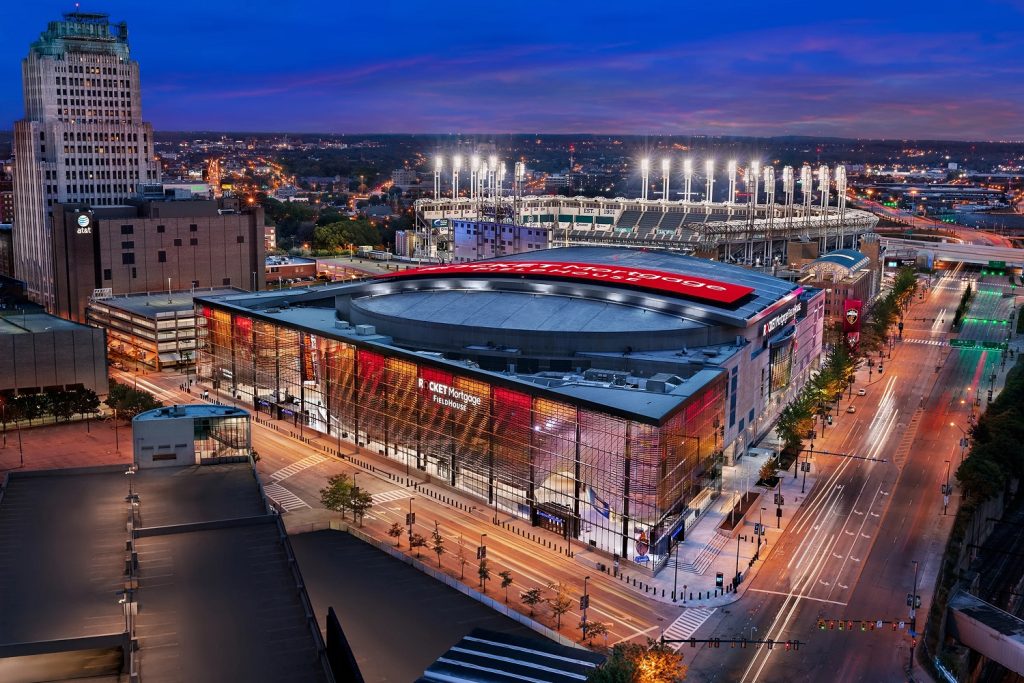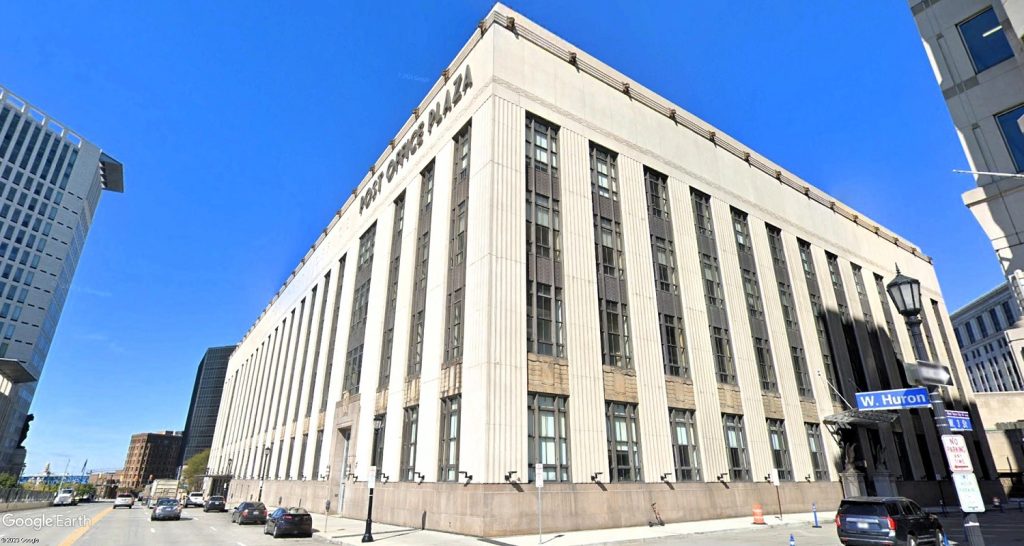Downtown megaprojects make headlines

For many in the real estate investment community, 2023 was the year when few new big projects were financed. The projects that were already financed under better, prior market conditions saw their construction advance, making the real estate landscape appear rosier than it really was. Now, however, as we enter 2024, there is a light at the end of the tunnel with developers already reviving or making new plans.
In 2023, some real estate investors adopted the mantra “survive ’til ’25” in light of tightened lending and high interest rates. Many development plans were put on hold in anticipation of improved market conditions next year. Other Cleveland projects already in pipeline were hurt by inflation and couldn’t wait — 91 of them have sought $165 million in city grants and loans from a $49.5 million pot of subsidies even as the city reduced tax abatements for projects in hot neighborhoods, effective yesterday.
Despite those many challenges, by the end of this year we may hear officially of new projects, some of them already rumored and others that could offer pleasant surprises as they invariably do. Because there are so many Cleveland-area projects in progress, planned or on hold, this look back to 2023 and look ahead to 2024 had to be broken up into multiple articles. Downtown is where most of the headlining projects are located. So let’s start there first.
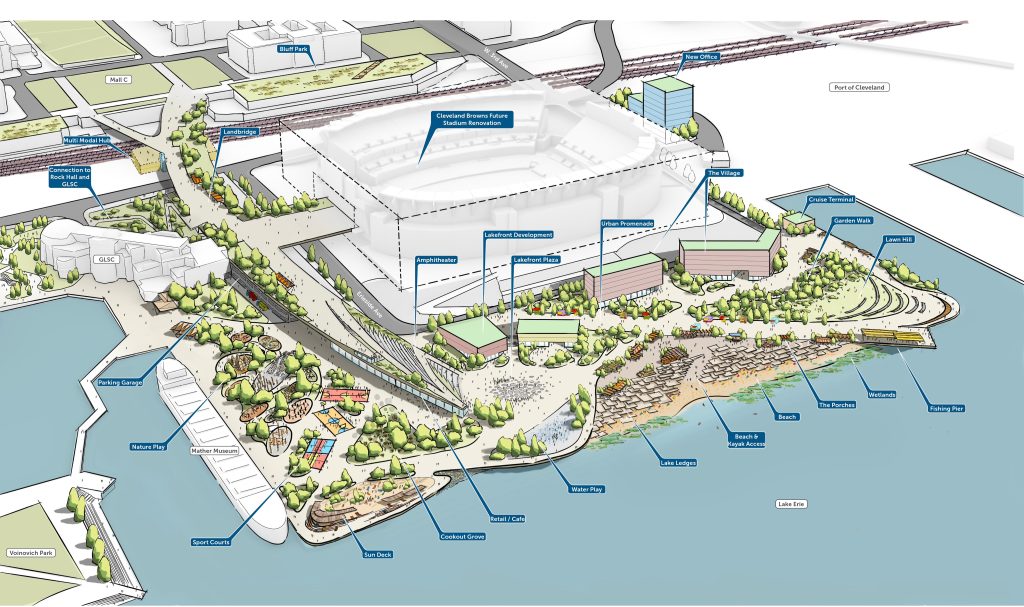
First revealed in July 2023, the city of Cleveland’s vision for potential lakefront improvements west of North Coast Harbor and surrounding a proposed renovation of Cleveland Browns Stadium depends on the funding and construction of the North Coast Connector to link downtown’s core to the shore of Lake Erie, and conversion of the Shoreway highway into a boulevard (JCFO).
Lakefront finally showing progress
One of the first items of development news likely in 2024 will be the completion of plans for the redevelopment of Downtown Cleveland’s lakefront led by Mayor Justin Bibb. That’s especially true for the area around North Coast Harbor, a to-be-renovated Cleveland Browns Stadium and the Rock & Roll Hall of Fame and Museum now undergoing a $100 million expansion.
Those plans for improving public access to Lake Erie will need to be adopted by the new North Coast Waterfront Development Corp., Cleveland Planning Commission and Cleveland City Council. They determine how lakefront land is used in Cleveland. Support from transportation funding agencies will also be sought including the Northeast Ohio Areawide Coordinating Agency, the Cleveland-Cuyahoga County Port Authority and the Greater Cleveland Regional Transit Authority.
If they support the plans, then funding for engineering can be sought for things like the conversion of the Shoreway highway into a boulevard and a multi-modal transportation center. Environmental permitting for waterside improvements and construction of the North Coast Connector are also possible by the end of 2024.
Funding procurement is already underway for the Cleveland Metroparks’ $300 million CHEERS project, or the Cleveland Harbor Eastern Embayment Resilience Strategy. It will redevelop the waterfront from downtown east to Cleveland Lakefront Nature Preserve near Gordon Park.
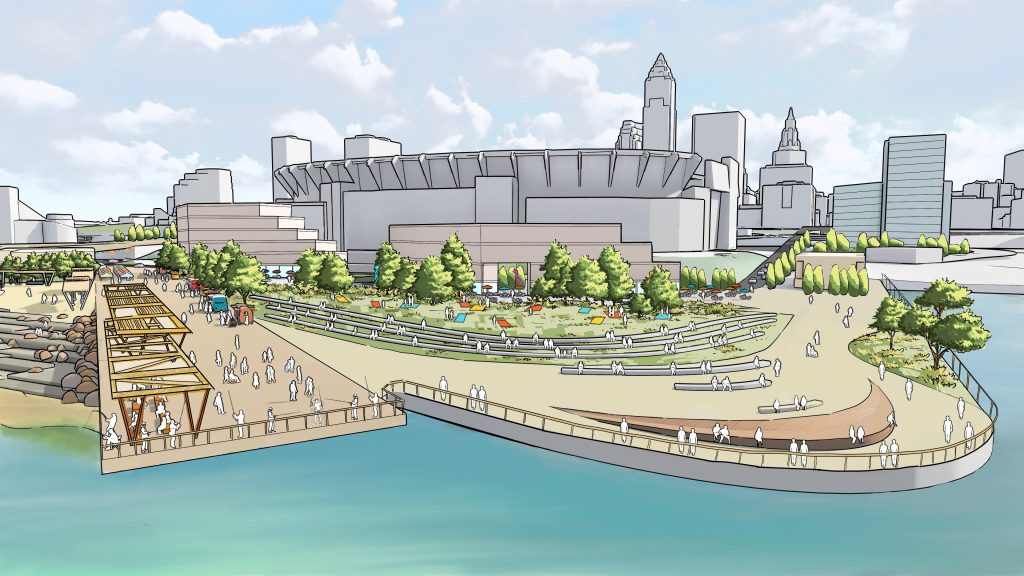
A fishing pier at left and, to its right, a lawn to watch shipping activity at the Port of Cleveland are among the features proposed to be included in the city’s lakefront plan. In the background is Cleveland Browns Stadium and, to the right of it, a new ferry terminal and potential high-rise development along West 3rd Street (JCFO).
CHEERS work includes the revitalization of Gordon Park south of Interstate 90, the extension of the Lakefront Bikeway from East 55th Street to downtown, and the 20-year construction of a new waterfront and island offshore from Gordon Park, all nourished by dredged harbor sediment.
Of course, a big piece in all of this is the renovation of Cleveland Browns Stadium, which is probably an easier sell after the Browns’ second playoff appearance in four years. The Haslams, owners of the football team, sought a brand-new stadium on the northeast side of downtown but its multi-billion-dollar price tag scared off city officials.
Even so, the Haslams had to make a subtle threat of a move to the suburbs to get the city to consider an intensive stadium reconstruction versus a cosmetic one. Both sides hope to finalize their renovation deal in the coming months.

Bedrock Real Estate’s first phase of its riverfront development master plan is outlined in red, with “Phase 1A” at the extreme right which represents the new Cleveland Cavaliers’ practice facility and the Cleveland Clinic’s Global Peak Performance Center which could, in total, exceed 250,000 square feet (Adjaye Associates).
Riverfront projects are flowing
Downtown Cleveland is blessed with two waterfronts. One of the largest projects to improve the Cuyahoga River waterfront got underway in 2023 — the hillside stabilization for Irishtown Bend Park. No less significant was the start of construction last year of more than 600 housing units on Scranton Peninsula.
It’s true that Great Lakes Brewing Company is having second thoughts about moving its production facility to Scranton Peninsula. If it does, look for a developer to snap up that land on both sides of Carter Road for residential buildings that are legally allowed to be as tall as 17 stories. More residential, including for-sale housing, is planned closer to Columbus Road.
But when people think of riverfront development downtown, they probably think of Dan Gilbert and his Bedrock Real Estate’s $3.5 billion plans, notably those near Tower City Center. A portion of the first phase was broken out last fall into a “Phase 1A” featuring a new Cleveland Cavaliers basketball practice facility and a Cleveland Clinic Global Peak Performance Center to provide sports health care. The size of the combined facility was announced at 250,000 square feet but be slightly larger, a source suggested.
The rest of the first phase, heralded by an office tower for Rocket Mortgage, could be activated by lower interest rates. Not only would lower rates reduce construction costs but also boost Rocket Mortgage’s business. A hotel and a residential structure are also reportedly part of Bedrock’s Phase 1B at the east end of the riverfront site which depends on infrastructure investments like a relocated Canal Road and new sewers.
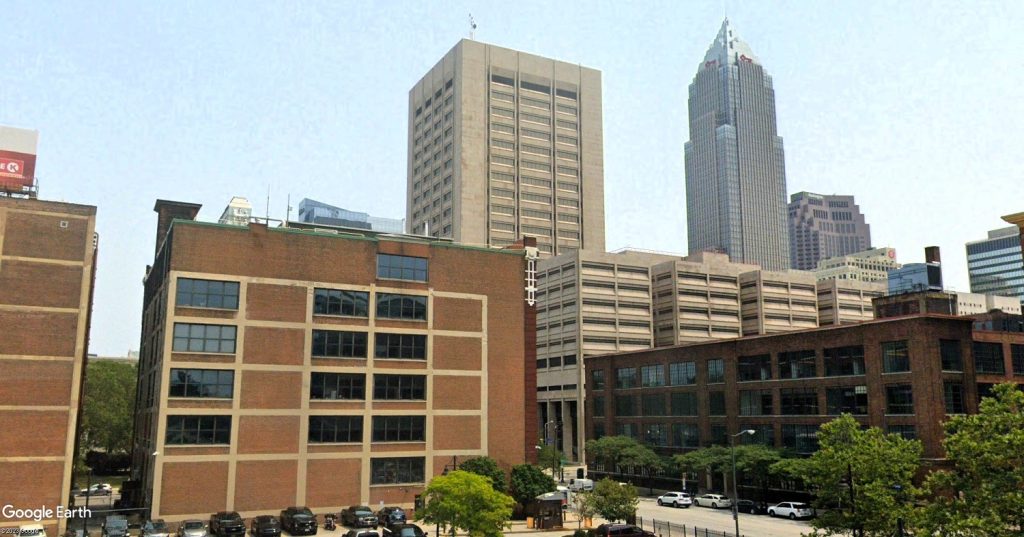
The Justice Center’s courthouse tower is in the center of this view. But one of the options for replacing the tower is to build a new courthouse where approximately this view was taken — from just north of the intersection of Lakeside Avenue and West 6th Street. This view is from the elevated Shoreway highway which may not be here much longer. In front of the current courthouse tower and slightly to the left is a Cuyahoga County office building called Courthouse Square that is also in play (Google).
Justice Center remake has funding
A transformational vision for downtown rests with Cuyahoga County’s government which now has the resources to implement it. A countywide sales tax was extended by 40 years last month by a slim majority of the Cuyahoga County Council to yield about $4 billion to afford the relocation of the county jail out of downtown to Garfield Heights and a new or renovated/expanded courthouse providing a 1-million-square-foot facility with a parking structure(s) measuring roughly as large.
A third component would involve a partial or full redevelopment of the existing Justice Center site which could include an expansion of the convention center and possibly a large, new hotel. Anywhere from 7 to 15 acres of downtown land could host new or renovated buildings as a result. Seven responses to the county’s requests for proposals for the courthouse, the existing Justice Center block, or both are being reviewed by county Executive Chris Ronayne and other county officials.
Only a couple of the responses have been shared publicly so far. General descriptions exist for several of the others. Two remain a complete mystery. But the coming year will offer a clearer picture of what these proposals and the winning transformation look like. No matter which one is selected, it’s going to be a megaproject.
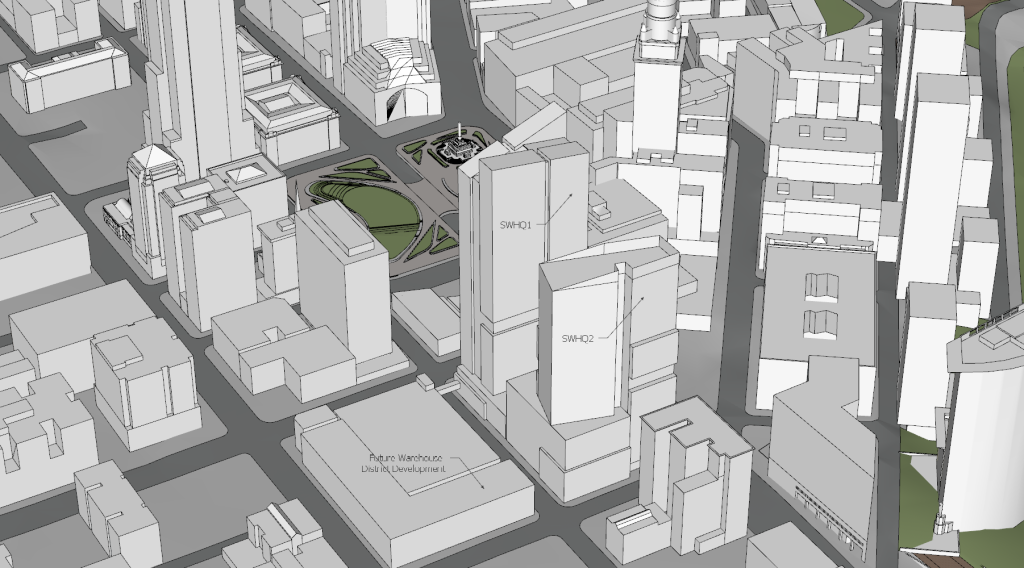
In this unofficial rendering, a Sherwin-Williams’ HQ2 tower could approach 500 feet tall if all of the company’s existing unaccommodated and future office needs were included in this skyscraper, along with more parking to compensate for the lack of spaces in HQ1. Mixed-uses include hotels, offices, retail and restaurants are shown as a featureless massing surrounding the HQ1 parking deck in the Warehouse District (Ian McDaniel).
Sherwin-Williams, HQ are growing
Speaking of megaprojects, by the end of 2024, Sherwin-Williams’ officials hope to start moving up to 3,500 workers into their new, 616-foot-tall headquarters tower west of Public Square. But by that time, assuming company and market conditions allow it, we may start hearing some official information about a major, follow-on project to develop the west half of the global coatings giant’s downtown campus.
NEOtrans has been hearing from sources in recent months that Sherwin-Williams is taking a more urgent look at constructing a planned second tower with structured parking at the northeast corner of Superior Avenue and West 6th Street. Additionally, low-rise structures are envisioned around its new 920-space parking garage that insiders say was built too small.
This may happen sooner rather than later because of unexpected sales growth of more than 15 percent since the new HQ was announced. That is causing the company to lease 212,000 square feet of office space in the Higbee Building, across the street from its 900,000-square-foot HQ since 1930. Another 100,000 square feet of offices is leased in the Skylight Building; nearly 200,000 square feet of offices are in Warrensville Heights and Hinckley Industrial Parkway in Cleveland.
Sources say Sherwin-Williams has 900 employees in Greater Cleveland and several hundred more Valspar workers in Minneapolis it cannot fit into its new, 1.1-million-square-foot HQ. That doesn’t include the offices of suppliers and servicing firms Sherwin execs are trying to woo to Cleveland. Nor does it include extra space to accommodate future growth. Sources say the company may reveal its plans for a so-called HQ2 by the end of 2024.
Campus District: no Payne, no gain
Plans for new and renovated structures on Cleveland State University’s main campus downtown were requested in 2023 and will be unveiled in 2024. Two of the most notable projects include the construction of a new 5,000-seat multi-purpose arena and associated mixed-use district on Payne Avenue. Another project involves the redevelopment of CSU’s tallest building, the 19-story, 363-foot-tall Rhodes Tower with 13 floors of housing for 500 students.
The new arena, whose master developer will be chosen in early 2024, will add to redevelopments already underway in the Superior Arts District that include the new Cross Country Mortgage HQ, new Cleveland Police Division HQ, residential conversions of multiple warehouse and other commercial buildings, a church being converted into a beer garden/entertainment complex, plus a new-construction office building over ground-floor retail.
Also, the Cuyahoga County Board of Elections may relocate to the former Plain Dealer Building, 1801 Superior, before the presidential election in November — or at least that’s the goal. All these developments will be enhanced by the $25 million Superior Midway project to add a landscape bikeway down the middle of wide Superior Avenue from Public Square to East 55th. But construction won’t get rolling until 2025, city officials said.
Downtown, etc.
You know there’s a lot of big developments going on in Downtown Cleveland when a half-billion-dollar project, the Centennial at 925 Euclid Ave., falls into the “etcetera” category. Part of that is due to the uncertainty of converting the former Union Trust Bank Building into residential, hotel, retail and modern offices.
To add emphasis to the uncertainty, the building’s owner Millennia Companies, which is cutting payroll 25 percent and selling 33 multi-family properties to address reported budget problems, put the mixed-use conversion on hold while offering 925 Euclid as a candidate for the county’s courthouse project instead. Why? Because the county’s revenue stream has more certainty than the tens of millions of dollars in public financing Millennia has assembled.
Another historic office conversion, The Rockefeller Building, 614 W. Superior Ave., has been in the works for more than several years, too. The reasons are complex but they could be resolved in the coming weeks. If so, the project will move forward in a rather exciting fashion, sources said. If not, well… let’s not go there yet. As they say down South, “Can’t never could.”
But large, new construction projects downtown may have to wait for interest rates to come down and lenders to loosen up. Those projects include the proposed redevelopment of the Greyhound station and surrounding property, a high-rise or two in the Warehouse District, a ballpark village in the Gateway District surrounding a newly renovated Progressive Field, and long-planned developments on for Flats East Bank and the West Bank. Hopefully there’s enough construction workers available in 2025!
NEXT: UNIVERSITY CIRCLE
END

